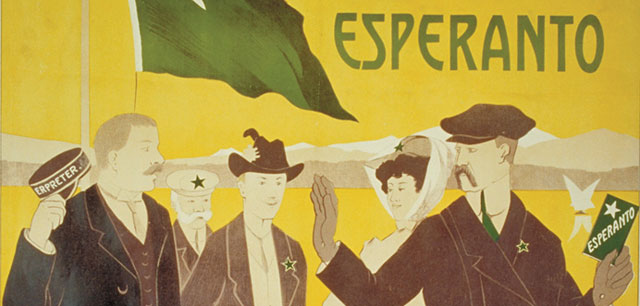Location
Palais Mollard, Herrengasse 9, 1010 Vienna
esperanto@onb.ac.at
Opening Hours
A language for everyone: The Esperanto Museum is the most important of its kind in the world. It depicts through a modern museum concept the up-and-down history of Esperanto and has as its theme the relation of man to language.
Founded in 1927 by Hugo Steiner, it was incorporated in the Austrian National Library in 1928. Thanks to more than 80 continuous years of collecting activities (interrupted only during the National Socialist period, when the „dangerous Jewish language“ was forbidden) the world’s greatest scholarly library on planned languages was set up. About 500 so-called planned languages are documented, of which Esperanto and Interlingua are the most important.
There have been planned languages since the 16th century and outstanding figures of European intellectual life, such as Francis Bacon, René Descartes, and Gottfried Wilhelm Leibnitz, dedicated themselves to their structure. But planned languages are more than just philosophical speculation. No later than the 19th century, with the growth of international relations, the problem of intercultural understanding became ever more acute. Many languages were competing for the role of the world language. The creators of the so-called world auxiliary languages were looking for a way out of that situation through the invention of a new language easy to learn and applicable to everyday life; conditions that were met by Esperanto, presented by the Polish eye-doctor Ludvik L. Zalmenhof in 1887. It was meant as a language that conserved the specialties of cultures while stressing unity in variety. Esperanto was rapidly developed to an efficiently functioning complete language that is today mastered by several million people.
At the Museum’s interactive media stations visitors can acquire a basic knowledge of Esperanto and learn the grammar rules of the language. In addition, a video course from the BBC conveys how spoken Esperanto sounds.
But you can also get acquainted at the terminals with other planned languages, such as the mystical language Lingua Ignota of Hildegard von Bingen, Klingon from the cult series of „Star Trek“, or the joke language Starckdeutsch. Finally, a further media station shows that even the so-called natural languages contain artificially created vocabulary.

